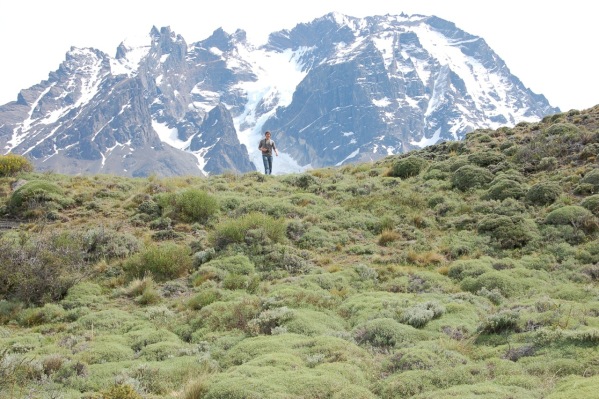Technically an offshoot of walking, this is my personal favorite way to Move Frequently at a Slow Pace. There’s nothing wrong with walking around the block with my wife at sunset (in fact, there’s everything right with it), but there’s just something about being out in nature, mostly alone and free to do as I please. And really, is there anything more Primal than messing around in the open wilderness? The terrain shifts, there are rocks to lift and toss, tree limbs to climb, and hills to scale. Because your foot lands differently on varied terrain, you train the small muscles in your feet more effectively. If walking around your placid suburban block gets old, strike out for the hills!
Mark Sisson on hiking
Primal Blueprint Fitness
Although we did not lift heavy rocks or climb trees, the hikes in Torres del Paine National Park in Patagonia, Chile were beautiful and invigorating. Here are a few photos.
Rafa, one of our guides, and John Michael.
John Michael and guide Nata.
Previous trip entries in chronological order:
- Travel - Chile / Patagonia, November 2011
- November 10: Arrival in Santiago, Chile
- Book fair in converted rail station, Santiago
- Terminal del Sur, Santiago
- John Michael at Terminal del Sur, Santiago
- Churrasco al Plato con Huevos
- Internet caffe, bus terminal Puerto Montt
- Boarding a Navimag Ferry
- November 11: On Navimag
- View along the port
- View of Puerto Montt & 32 person lifeboat
- John Michael: Voyage by Sea
- November 12 - Channels, Fjords & the Pacific
- November 13: Puerto Eden and the Pio Once Glacier
- November 14 & 15: Puerto Natales
- November 15-20: EcoCamp
- November 15: Hiking the French Valley, Torres del Paine National Park













